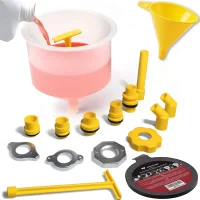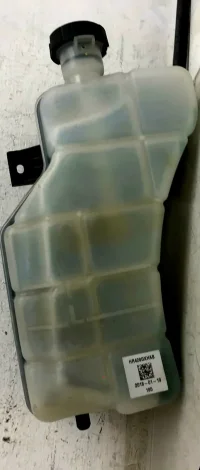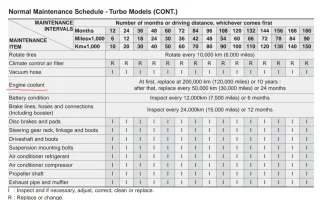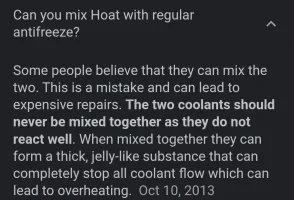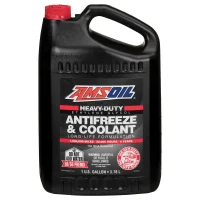Hey guys I thought I’d share my experience bleeding the coolant on my 18 Kia stinger gt2.
First a little backstory I picked this car up salvage to fix and had some front end damage. Radiator was busted and had to be replaced which leads me to why I’m bleeding the coolant.
At first I did my usual method of filling up the radiator, starting the car and letting it bubble until it overflows. Shut off and we are done.
However, when I tried this I still had only
Like warm air out of the vents so I know I had an issue. I went to the kstinger.com website and looked at the factory refill instructions. To my surprise they essentially purged the system by sending a command to open the thermostat manually and running the car for 15 minutes or so.
Obviously I didn’t have a KDS tool so I couldn’t send any command to open anything other than through how the system was designed to
Operate.
So essentially to mimic these operations and to fully bleed the system I did the following.
- lift the car up enough to get a bucket or pan underneath the general area where the radiator cap is as it’s going to leak out and spill at times
- open the radiator cap and fill till radiator neck is full. (It looks full but she’s lying to you, there’s air bubbles all in the system!)
- I used an OBD tool to monitor the coolant temp (blue driver to be specific)
- start the car and turn it to max heat with air coming out of the vents vice the floor which it automatically switches to
- now the tedious part. Fill the coolant, watch half of it over spill out as bubbles are expounded. It’ll draw the coolant down. Then repeat and fill again till it’s at the radiator neck and about to over flow again. I mirrored the factory manual by revving the engine a few times by this may be super quick if you have a helper to intermittently rev while you monitor the radiator neck and fill as needed. (I didn’t)
- In any case fill , wait for bubbles, rev engine , fill , wait for bubble , watch it over flow, watch it draw down , fill ,rev ,watch for bubble/overflow until the following occur:
1- your heat actually starts producing very hot air
2- your radiator neck level should stabilize (when I concluded mine still had very small bubbles being expounded but no real change in level for 1-2 minutes even after revving)
-Once this occurs you’re golden! Reinstall your radiator cap and ride into the sunset.
I reused the coolant the overflowed but to strain it I placed Two clean rags into a funnel and passed the coolant through the rags before it went back into the container I was using
To fill. This way the sediment is caught. You could just toss the overflow coolant to be super safe but plan on have Atleast 1 extra gallon of
Coolant above what you estimate.
Warning/cautions
- don’t open hot radiator caps, let the car cool down
- yes this whole process is done with the cap off the whole time. I monitored my car temp via both the OBD tool and the gauge in the dash and it never got above 220.
- don’t put your face 6 inches above the radiator cap as it sometimes will splash this far up if you have a sizable air pocket being expounded.
- the coolant overflowing is going to be hot … so be careful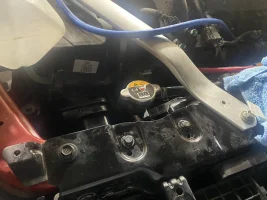
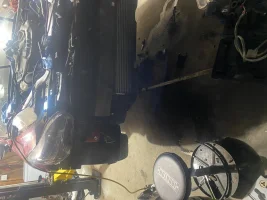
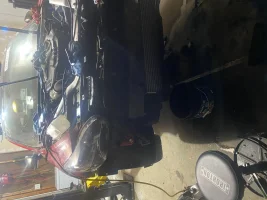
Pictures attached just for reference
First a little backstory I picked this car up salvage to fix and had some front end damage. Radiator was busted and had to be replaced which leads me to why I’m bleeding the coolant.
At first I did my usual method of filling up the radiator, starting the car and letting it bubble until it overflows. Shut off and we are done.
However, when I tried this I still had only
Like warm air out of the vents so I know I had an issue. I went to the kstinger.com website and looked at the factory refill instructions. To my surprise they essentially purged the system by sending a command to open the thermostat manually and running the car for 15 minutes or so.
Obviously I didn’t have a KDS tool so I couldn’t send any command to open anything other than through how the system was designed to
Operate.
So essentially to mimic these operations and to fully bleed the system I did the following.
- lift the car up enough to get a bucket or pan underneath the general area where the radiator cap is as it’s going to leak out and spill at times
- open the radiator cap and fill till radiator neck is full. (It looks full but she’s lying to you, there’s air bubbles all in the system!)
- I used an OBD tool to monitor the coolant temp (blue driver to be specific)
- start the car and turn it to max heat with air coming out of the vents vice the floor which it automatically switches to
- now the tedious part. Fill the coolant, watch half of it over spill out as bubbles are expounded. It’ll draw the coolant down. Then repeat and fill again till it’s at the radiator neck and about to over flow again. I mirrored the factory manual by revving the engine a few times by this may be super quick if you have a helper to intermittently rev while you monitor the radiator neck and fill as needed. (I didn’t)
- In any case fill , wait for bubbles, rev engine , fill , wait for bubble , watch it over flow, watch it draw down , fill ,rev ,watch for bubble/overflow until the following occur:
1- your heat actually starts producing very hot air
2- your radiator neck level should stabilize (when I concluded mine still had very small bubbles being expounded but no real change in level for 1-2 minutes even after revving)
-Once this occurs you’re golden! Reinstall your radiator cap and ride into the sunset.
I reused the coolant the overflowed but to strain it I placed Two clean rags into a funnel and passed the coolant through the rags before it went back into the container I was using
To fill. This way the sediment is caught. You could just toss the overflow coolant to be super safe but plan on have Atleast 1 extra gallon of
Coolant above what you estimate.
Warning/cautions
- don’t open hot radiator caps, let the car cool down
- yes this whole process is done with the cap off the whole time. I monitored my car temp via both the OBD tool and the gauge in the dash and it never got above 220.
- don’t put your face 6 inches above the radiator cap as it sometimes will splash this far up if you have a sizable air pocket being expounded.
- the coolant overflowing is going to be hot … so be careful



Pictures attached just for reference


